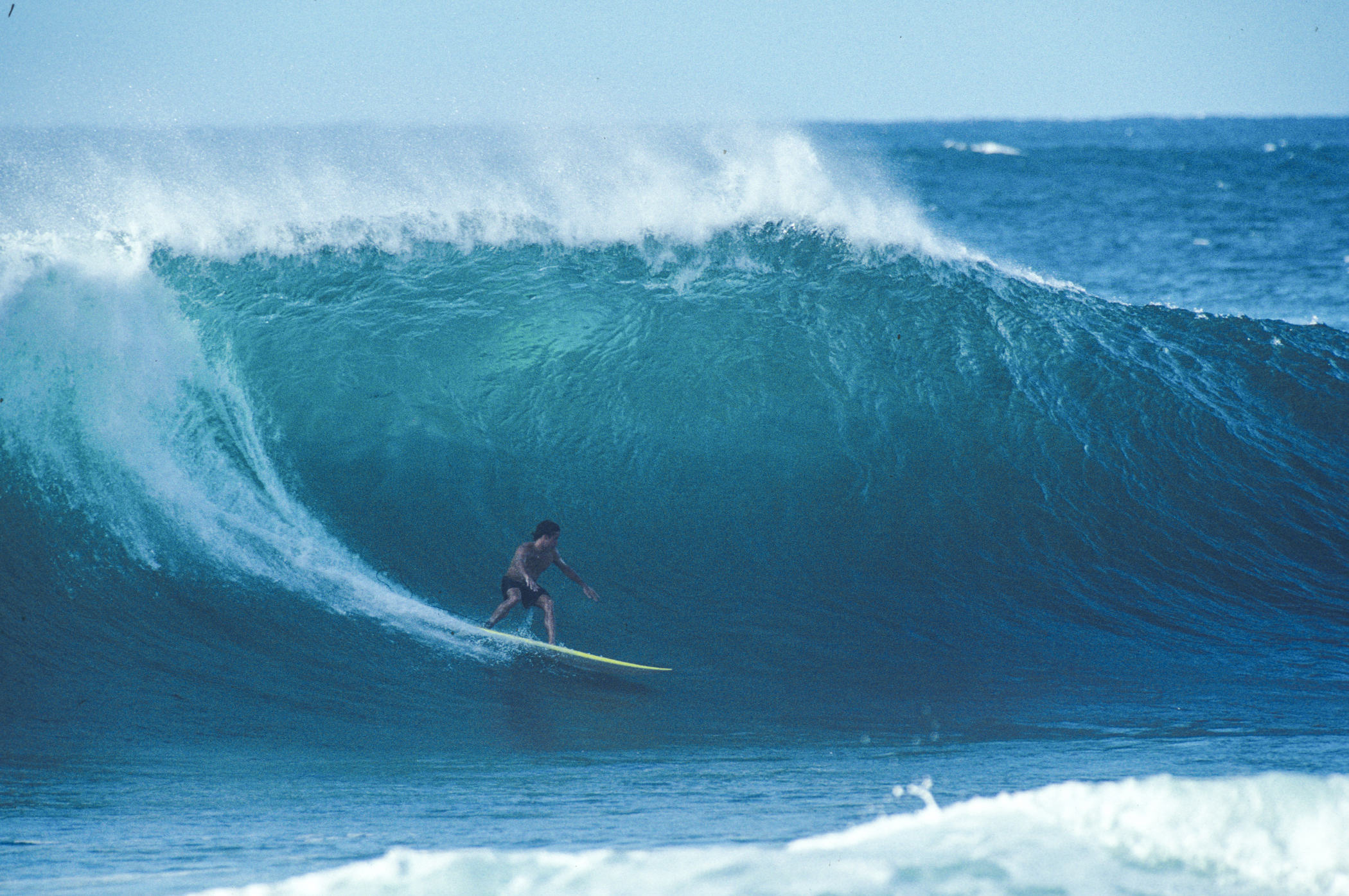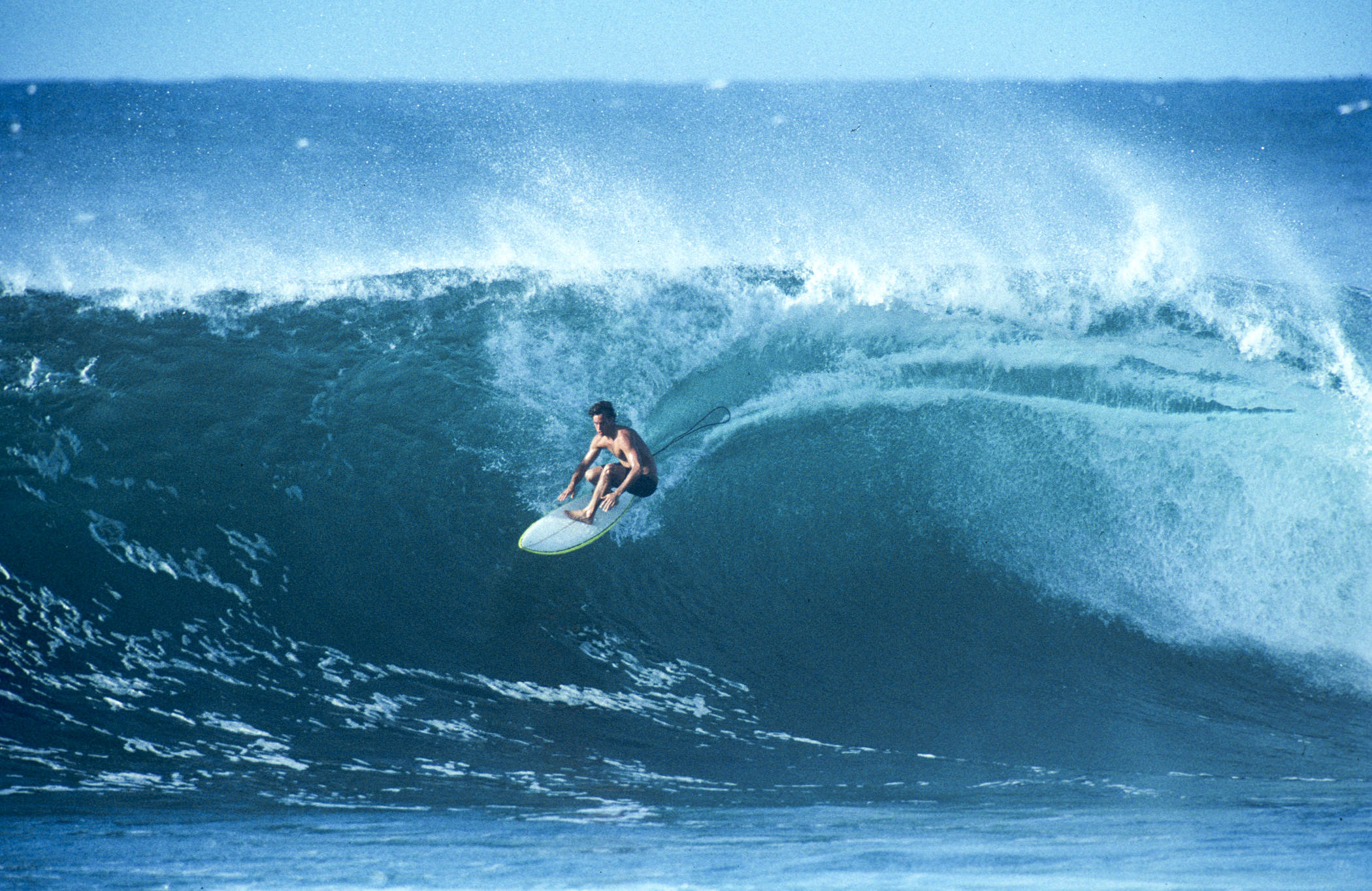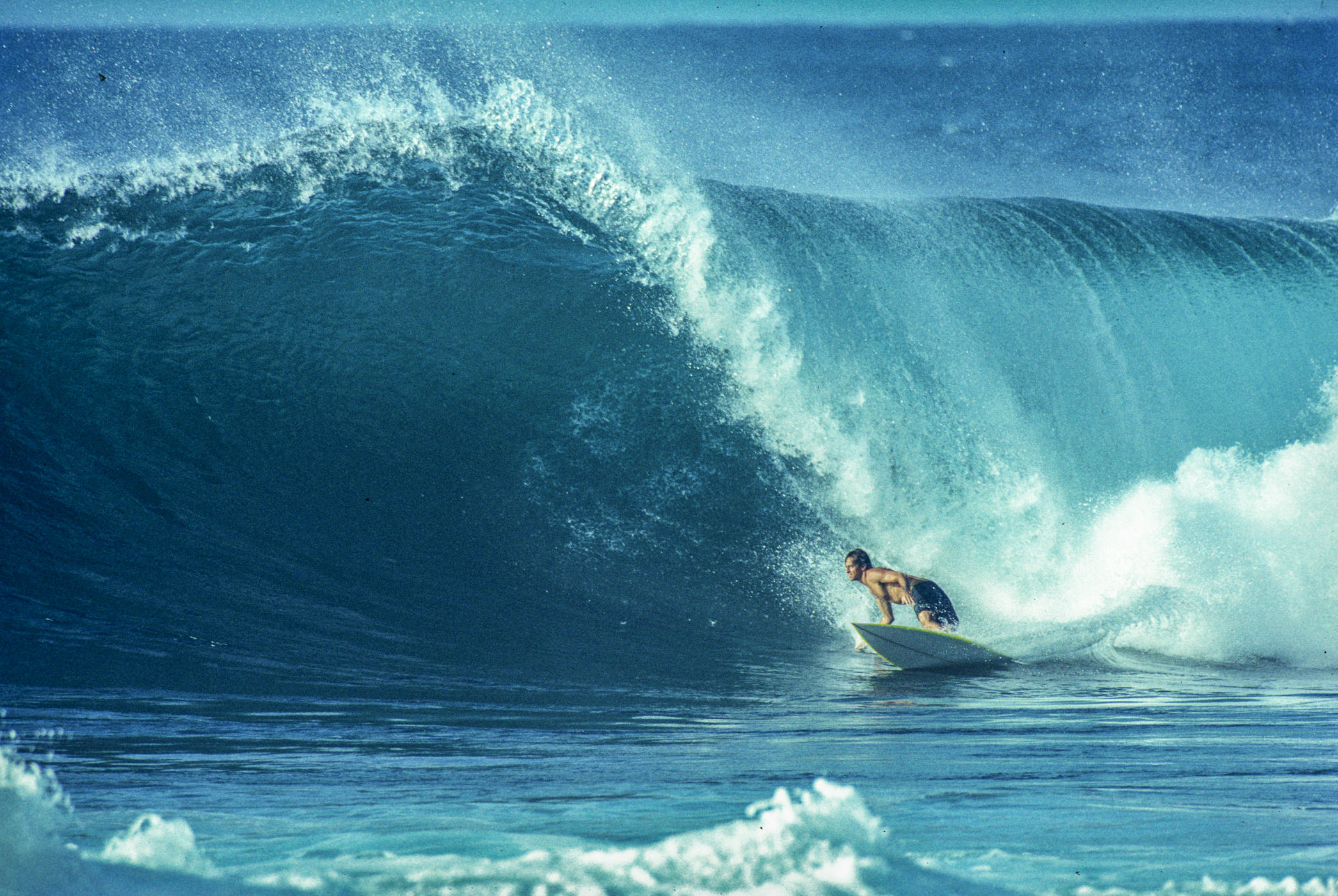Tom Curren And The Most Famous Board Ever Shaped
“His heat’s already out in the water. So I give him the board. He looks at me, and asks, ‘Got any wax?’” – Maurice Cole.
“I was roaring up the wrong side of the Kam Highway in my van, laying on the horn, yelling out the window, carrying on like it was the bloody zombie apocalypse,” says Maurice Cole.
The year was 1991 and only minutes earlier he’d convinced Tom Curren to step up from a 7’3” to a 7’8” in the quarters at Haleiwa. The catch was that the longer board was back at the Kuilima condos on the other side of the North Shore. With Tom’s heat coming up quickly, Maurice, a man of perpetual action, charged himself with retrieving the now-famous, logoless, yellow-railed semi-gun in record time.
“I came screaming back into the car park, hopped the curb, pulled right up to the scaffolding, and there’s Tom, just waiting. His heat’s already out in the water and he’s just standing there, patiently waiting like a kid who’s mom told him not to move,” continues Maurice.
“So I give him the board and tell him to get out there. He looks at me, and asks, ‘Got any wax?’”
Last summer, Maurice was hanging in San Clemente and talking story in one of Timmy Patterson’s unused shaping rooms in the surf ghetto. Twenty-five-plus years after Curren’s win at Haleiwa and the iconic “cutback” photo by Tom Servais, he’s set upon shaping a limited run of replica boards, which will come complete with yellow rails, no logos and a diligently researched collector’s book penned by Nick Carroll.

1991, a 7’8 Maurice Cole shape and Tom Curren at Pipeline shot on film. Some may call this “the good old days.”
Maurice pulls a board down from the rafters. Brown with age but in remarkable condition otherwise, the scribble on the stringer reads, “For Tom.”
“It’s the first reverse vee I shaped for him,” says Maurice.
When it comes to provenance, this board has it. Thanks to the breakthrough design, Curren would go on to do “the turn,” bucking the establishment and stealing hearts and minds in one clean, celluloid arc. Maurice then pulls a 7’8” shaped blank off the rack. It’s one of the replicas. It’s a narrow, knifed blade. Looking at the board, pondering its conjoining curves, Maurice surmises, “This board’s a miracle, really.”
For those that believe saintly Curren walks on water, then yes, this board and the reverse vee design it ushered in is indeed a miracle. But for those more prone to Darwinian philosophy, it’s a happy mutation that initiated a massive evolutionary step forward.
In 1990 Maurice had been surfing and shaping in relative obscurity in France for the better part of a decade when he chanced into Curren one day at La Graviere. After a short, awkward conversation that resulted in an order for a 6’9”, Maurice stepped into the shaping bay to “have a whittle.” He found his blanks had been packed incorrectly, and as a result they had an extra 3/4” rocker in the nose and an extra 3/4” rocker in the tail. To make matters worse, they weren’t true. They were twisted and warped. Undeterred, Maurice got to work.

“I got $16,500 USD for the board from Spencer Croul,” Maurice told Stab. “I blew it all on a family holiday in Hawaii. Best holiday ever, but that’s another story…”
“I’ve always been one to shape from my gut. I was probably surfing more than I was shaping and figured I’d make it work somehow. The board ended up totally asymmetrical, but it was the start of the reverse vee,” says Maurice.
Carving out a significant single vee through the front half of the board, Maurice then faded the vee into a very flat panel through the fins and tail. It provided Curren with an abundant amount of speed, while also making his top-to-bottom approach considerably more dynamic—which turned out to be a lethal combination. The design featured prominently in his “trials to title” run, in which he won a record seven contests en route to his third world title.
After two seasons of successful experimentation, in the fall of 1991 Maurice shaped a 7’3” and 7’8” while at home in France. With the resin still curing he packaged them up and shipped them to Curren, who was waiting on the North Shore. A week later Maurice jumped on a plane to Hawaii to join him. When he landed he asked Curren what he thought about the boards, but learned that they hadn’t arrived yet. Stuck in customs, eventually they were tracked down and Maurice made a mad dash to spring them from their internment at the Honolulu International Airport.
“I made it just before they closed. We needed the boards for the contest the next day, I don’t know what we would have done if we didn’t make it,” says Maurice.
Back on the North Shore for the sunset session, Maurice and Curren paddled out at Pua’ena Point on their recently liberated boards. Curren rode the 7’3” while Maurice paddled out on the 7’8”. Back on the beach at dark, both agreed the boards had some magic in them. Days later Curren won at Haleiwa (his first and only career win in Hawaii) and Servais snapped his famous frame at Backdoor.

According to Servais it was a moderate day by Banzai standards. The wind had come up later in the morning, chasing everyone away. In the afternoon, he was on his way home from shooting west swell action at Haleiwa when he decided to give Pipe one more check. The beach was quiet and the surf was glassing off when Curren silently snuck out for a few waves on the 7’8”. It only took one turn to create the legend, but after that winter the boards fell into relative obscurity.
“I ended up with the 7’8” and would only ride it at huge Mundaka,” says Maurice. “It should have broken that board five times over, but somehow it never did.”
Eventually realizing what he had, Maurice shaped himself another Mundaka gun and put the Curren board on ice. In 2015 philanthropist Spencer Crowell paid $16,500 at an auction for the 7’8”. Japanese preservationist Yasumori Tokura is purported to have the 7’3” in his collection.





Comments
Comments are a Stab Premium feature. Gotta join to talk shop.
Already a member? Sign In
Want to join? Sign Up